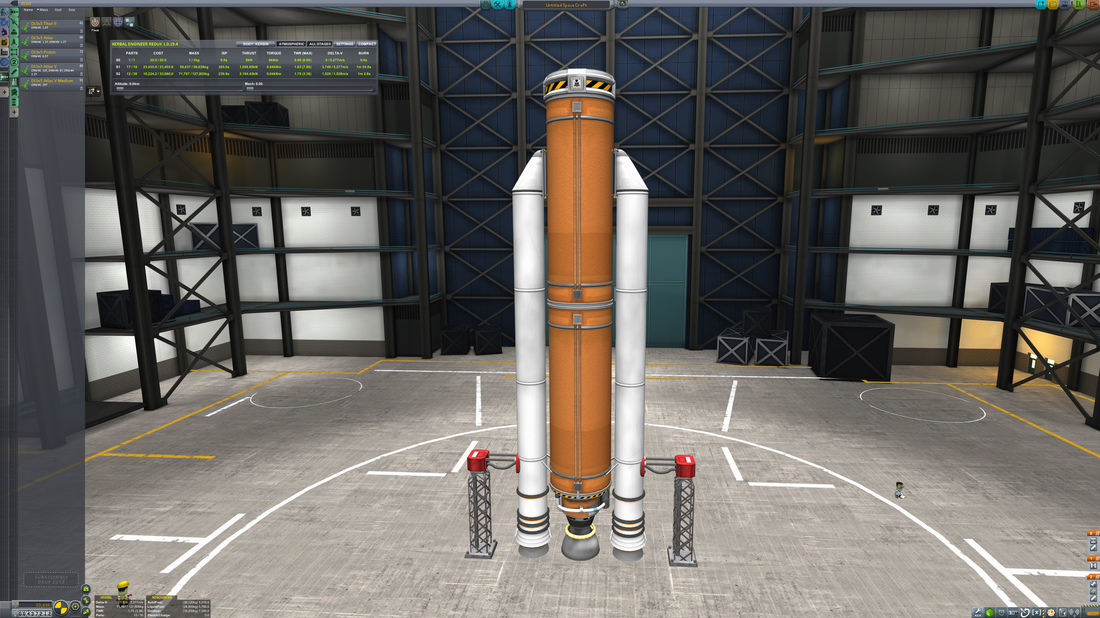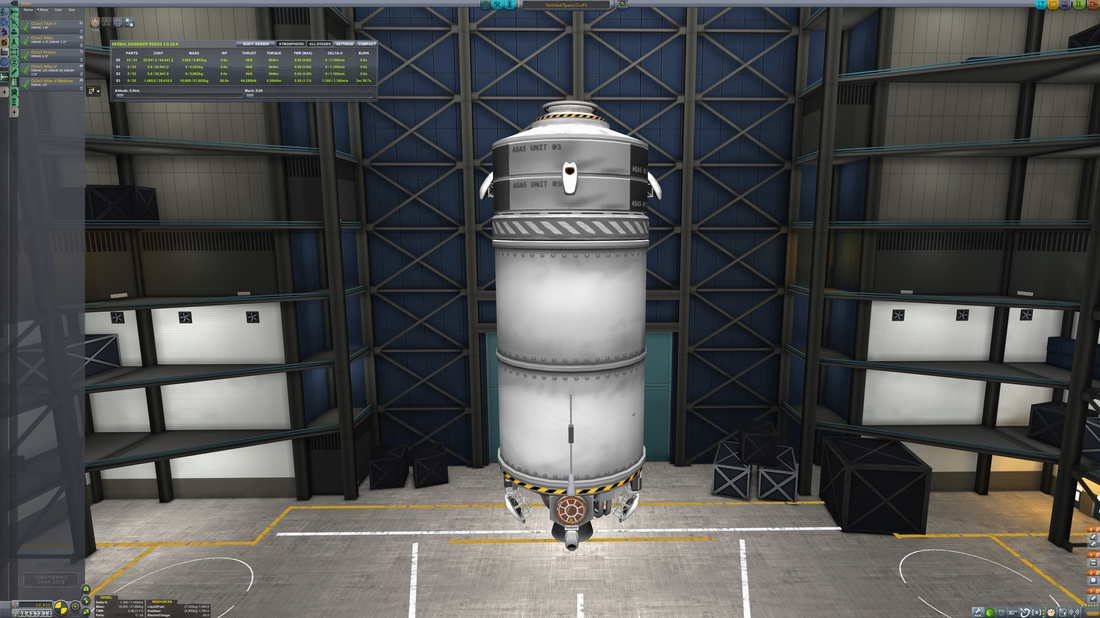In the Duna Launch System (DLS), rockets are built from two separate, yet equally important stages: the lower, which raise the rocket out of the lower atmosphere; and the upper, which place the payload into orbit. These are their stories.
The rockets used are designed around a Common Ascent Profile (CAP) implemented by our flight control software. CAP consists of several phases:
The rockets used are designed around a Common Ascent Profile (CAP) implemented by our flight control software. CAP consists of several phases:
- Phase 0: Liftoff is followed by a roll program, if necessary.
- Phase 1: The craft begins its gravity turn, slowly pitching back to 60º once the apoapsis reaches approximately 15km.
- Phase 2: The target pitch becomes 45º, but to minimize aerodynamic losses, the angle of attack is kept to under 2.5º.
- Phase 3: The craft slowly pitches down to 0º from 30km to 60km. This is typically followed by MECO, first stage separation, and second stage ignition.
- Phase 4: Once reaching a suborbital apoapsis of 60km, the craft attempts to bring its periapsis close to an orbital trajectory.
- Phase 5: Once the apoapsis reaches 80km, the craft coasts out of the upper atmosphere.
- Phase 6: The craft circularizes once it reaches its apoapsis.
|
Phases 0-3 are performed by lower stages featuring high thrust and engines which perform well in atmosphere. These stages may also include additional boosters. Lower stages should target 2400m/s of Kerbin seal level deltaV, with a launch-time thrust-to-weight ratio of at least 1.2.
|
|
Phases 4-6 are performed by upper stages optimized for vacuum fuel efficiency, with lower thrust requirements. These stages should allow for about 1250m/s of vacuum deltaV, with a thrust-to-weight ratio of at least 0.5.
|

